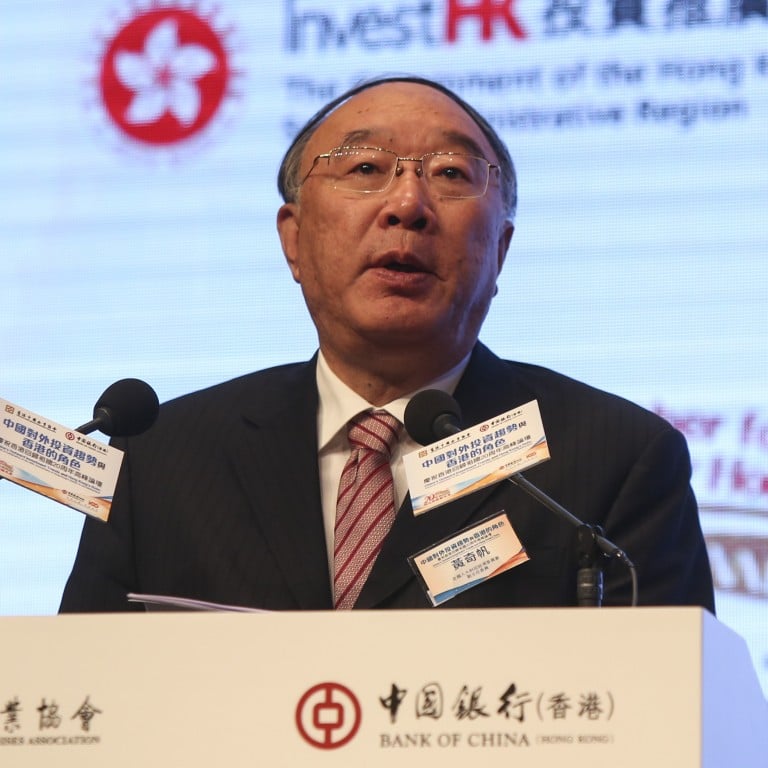
China urged to fix services ‘weak link’, increase investment in zero-to-one innovation
- Ex-Chongqing mayor Huang Qifan says an underinvestment in original innovation, as well as a services trade deficit, should be addressed
- China is seeking to boost its position in global value chains, while also seeking technological breakthroughs amid the heightened US tech war
Amid China’s quest to extract more economic potential, the world’s second-largest economy should strengthen inadequacies in the services sector as well as original innovation, urged a former high-ranking official known for his economic insights.
The underdevelopment in tertiary industries that serve manufacturers is sapping the growth momentum of subsectors from the digital economy to decarbonisation, said former Chongqing mayor Huang Qifan.
The lag is associated with underinvestment in zero-to-one innovation, which lead to technological breakthroughs or the reshaping of an industry, added Huang, who also worked as a senior official running Shanghai’s economy in the 1990s.
“[The underdevelopment in the producer service sectors] is a weak link in our economy, despite our strengths in agriculture and complete manufacturing sectors,” Huang, who served as mayor of the southwestern municipality of Chongqing from 2010 to 2016, told a seminar in Shanghai on Saturday.
“We must increase the weight of producer services and trade in services in our economy and foreign trade.”
China’s total research and development expenditure is ranked second worldwide, but just 5 to 6 per cent is spent on zero-to-one innovation – the initial step in creating something entirely new – compared to 20 per cent on average among developed countries, said Huang.
Huang’s comments mark the latest call from economists for Beijing to consolidate China’s footing in global value chains and seek technological breakthroughs amid the heightened tech war with the United States.
Amid an uneven post-Covid recovery and as geopolitical tensions increase, China continues to accumulate huge deficits in international trade in services, said Huang, while foreign firms, including Apple, earn substantial profits even after leaving the manufacturing of their products to their Chinese partners.
China’s gross domestic product (GDP) was comprised of 58 per cent of services in 2022, but it is estimated only a third of its service sectors are geared toward producers, said Huang.
This is compared to the average 45 per cent share for producer services in the overall services sector among developed nations, he added, pointing to China’s disadvantageous position in international trade in services.
China’s total trade hit US$6.3 trillion last year, but trade in services volume stood at 12 per cent, trailing the global average of 30 per cent.
China’s deficit in international trade in services in 2022 was US$94.3 billion, according to the State Administration of Foreign Exchange.
Much of our hard-won trade surplus and benefits are negated by the deficit
“Our US$6 trillion trade means huge demand for services, like international settlement, logistics and insurance, but most of them are from foreign firms. Much of our hard-won trade surplus and benefits are negated by the deficit,” said Huang, who also sat on the National People’s Congress’ Financial and Economic Affairs Committee in 2017 and 2018.
A lack of professional producer services at home was the major cause, he added, with firms and intermediaries in free-trade ports and tax havens, including Hong Kong and Singapore, filling the void by exporting their services and contributing to China’s deficit.
Huang said Chinese suppliers received only a quarter of the profits from Apple outsourcing iPhone assembly to China, with the majority retained by the American firm due to its stranglehold on the value chain and producer services.
He also attributed the fall in the size of China’s digital economy as a share of the US to China’s producer service shortcomings and uncompetitiveness in global digital trade.
The combined capitalisation of China’s top 10 digital companies was 17 per cent of that of the top 10 American peers in 2022, down from 24 per cent in 2019.
He said more research and development investments, particularly in zero-to-one innovation and basic research, would be one of the keys to expediting the development of producer service sectors.
Huang also urged solutions to lower the share of logistic costs in China’s GDP, from 15 per cent last year to 10 per cent.
The 6 trillion yuan (US$836 billion) that would be saved would translate into additional profits for numerous businesses, he added.
Financial services that usually cater to retail customers should also change, he said, as manufacturers are marginalised and their funding needs and costs should be addressed.
Huang also said Beijing’s ongoing drive to attract big data, cloud computing, digital platforms and other tertiary sectors to form a synergy to empower and digitalise manufacturing is also a key strategy to creating more value and profits.
He said that the goal of lifting the share of producer service industries to 30 per cent of China’s GDP and increasing the proportion of trade in services to 30 per cent of its trade, both by 2035, would still be attainable.


